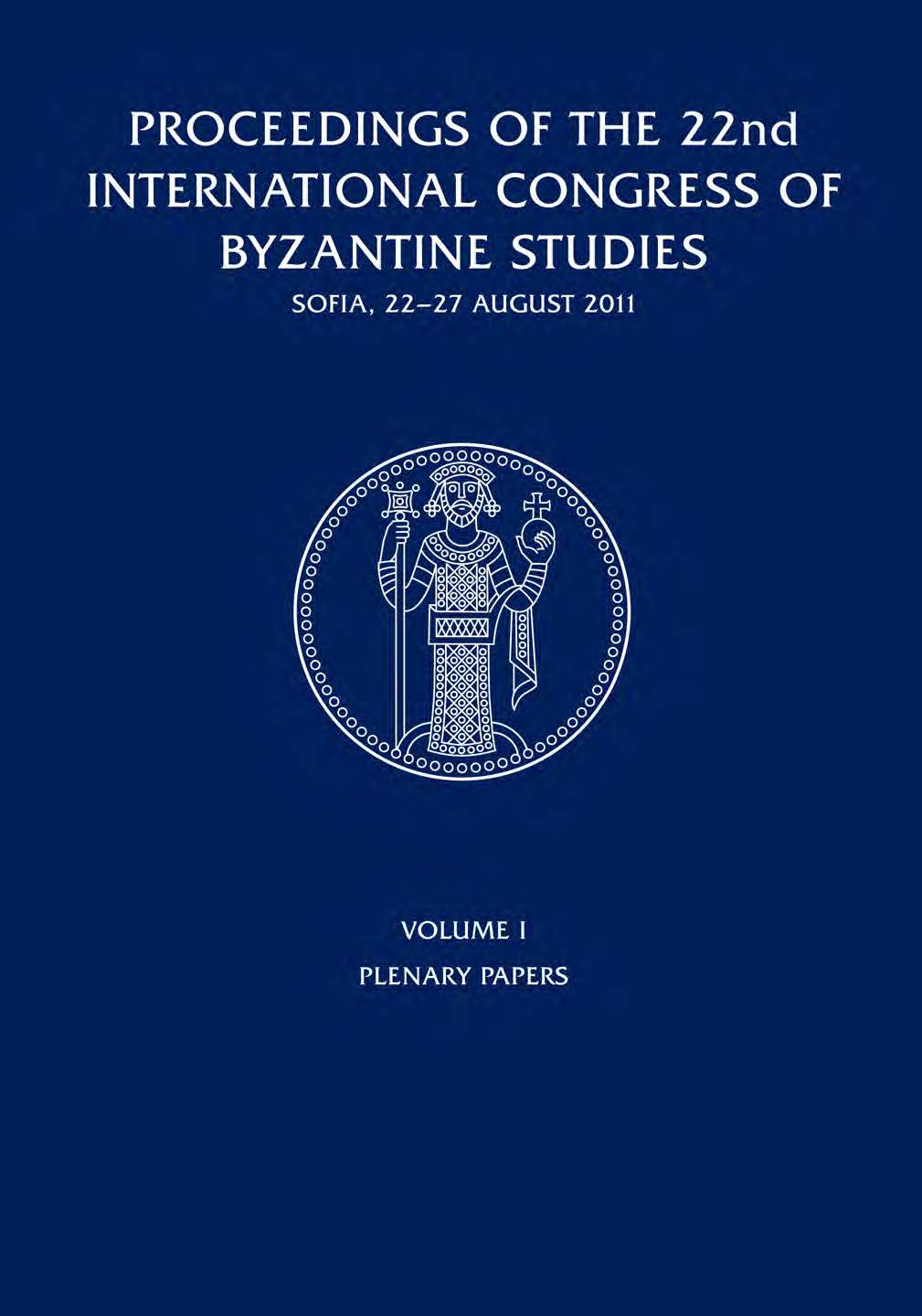

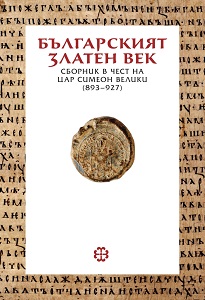
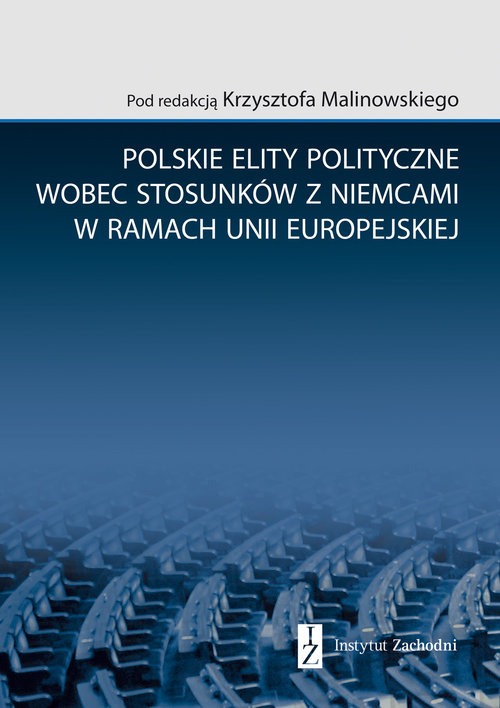
Keywords: Polish Parliament; Sejm; Polish-German relations
Analiza dyskursu parlamentarnego w Polsce w latach 2009-2015 dotyczącego Niemiec i możliwości współpracy między Polską i Niemcami pozwala ocenić, jak w kontekście kluczowych dla polskiej polityki zagranicznych obszarów działania – przemian Unii Europejskiej, polityki wschodniej, polityki energetycznej i klimatycznej oraz polityki bezpieczeństwa – postrzegana jest rola Niemiec i stosunków polsko-niemieckich.
More...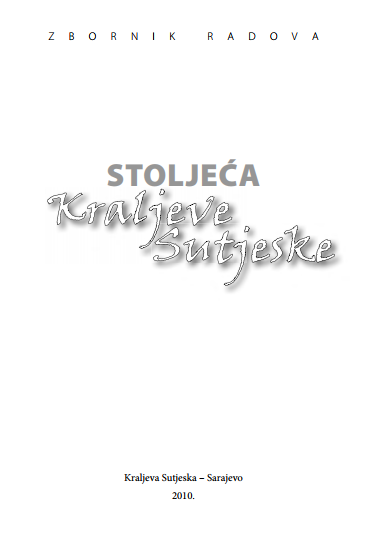
Keywords: WWII; Kraljeva Sutjeska; chronicle; monastery;
Otimati vijesti iz prošlosti zaboravu i, što je jednako važno, krivotvorenju, nemoguće je bez kritičkog oslanjanja na pisane isprave među kojima oduvijek posebno mjesto zauzimaju ljetopisi, a mukotrpan poduhvat hrvanja s prošlošću i zaboravom započeo je još Tukidid, grčki povjesničar iz Atene. Ljetopisi – anali ili kronike – kao preteče suvremenih povijesnih knjiga podrijetlo vuku još iz rimskog doba kad je vrhovni svećenik (pontifex maximus) za svaku godinu bilježio najvažnije događaje. Makar su poznati Annales i Historiae Tacita, Židovske starine Josipa Flavija te Ljetopis i Crkvena povijest Euzebija Cezarejskog, začetnika crkvene povijesti, kao publikacije u kojima se kronološki bilježe događaji tijekom godine, ljetopisi postaju omiljena književna vrsta kasne antike, svojevrsni nadomjestak historiografije. Izučavanje srednjovjekovne europske povijesti upravo se i zasniva na samostanskim kronikama.
More...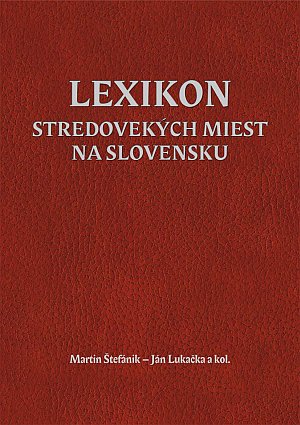
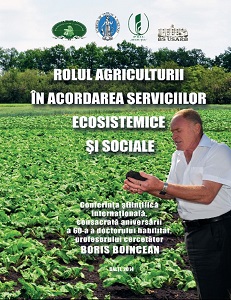
Keywords: ecology; economy of nature; ecosisteme; sol fertil; humus; tehnologii; organic system; bio-degradation of soil
Capitolul II cuprinde materialele comunicărilor prezentate în cadrul Conferinţei ştiinţifice internaţionale Rolul agriculturii în acordarea serviciilor ecosistemice şi sociale.
More...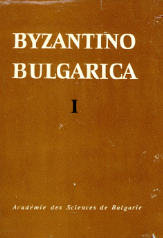

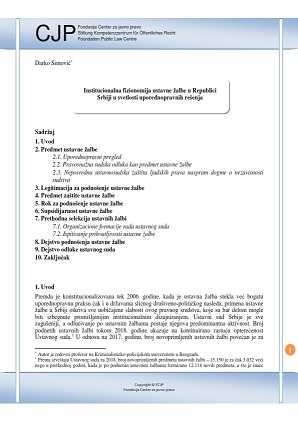
Keywords: Constitution; Constitutional Court; Serbia; constitutional complaint; physiognomy of constitutional complaint; public law;
In this paper the author analyses the institutional physiognomy of constitutional complaint in the Republic of Serbia, as well as it implementation in practice in light of institutional models of three respectable countries − Germany, Austria and Spain. Furthermore, it looks at some specific characteristics of constitutional systems which have subsequently established this legal remedy. Regarding the fact that comparative law does not provide an uniform institutional model of constitutional complaint and the limited experience of the Republic of Serbia with this institute, many questions have been raised in that field in our theory. At first glance, it seems that the 2006 Constitution of Serbia has very extensively established the possibility of utilizing constitutional complaint, which created a risk of impeding the work of the Constitutional Court. Data regarding the work of the Constitutional Court shows that deciding-on constitutional complaints has become the dominant competency of this body. Because of that it is necessary to establish more efficient mechanism of preliminary selection of constitutional complaints. In addition, the possibility of the Constitutional Court to annul court decisions has created tension between this Court and the High Court of Cassation. Hence, the relationship between the Constitutional Court and the ordinary courts must be more precisely and consistently regulated by a normative framework. In any case, the decreasing number of cases appearing before the European Court for Human Rights against Serbia shows that constitutional complaint is an increasingly effective legal remedy. However, for full affirmation of constitutional complaint as the legal remedy for protection of human rights, it is necessary to also develop an appropriate legal culture, which requires time.
More...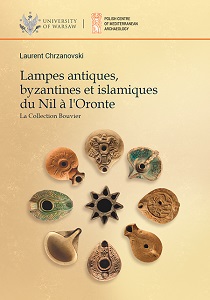
Keywords: antiquity; lighting; lamps; Egypt; Middle East
The Bouvier Collection presents a corpus of almost 800 clay oil lamps from Egypt and the Near East, collected by the Swiss Maurice Bouvier in Alexandria in the first half of the 20th century. Far from collections reflecting their owner’s aesthetic taste or iconographic predilection, the series of lamps published in this volume builds a true panoply of almost all the typologies attested in Egypt from the Phoenician period to the Mamluk sultanate, with a large appendix on Near Eastern types, acquired during trips to Lebanon and Syria. This Swiss collection today is second only to the holdings of the Benaki Museum in Athens. The volume is a milestone of Egyptian, Syrian and Lebanese lychnological studies. The presentation of the material offers in effect a long awaited synthesis of a field that is both difficult and still understudied. The corpus of lamps in the catalog covers all the major historical periods, bringing to the fore many local specificities of Egypt and the Near East, from Phoenician times through the Mamluk period. Complementing the catalog are reviews of the producer’s marks on the bases of the lamps and of the iconographic motifs decorating the discuses of Roman lamps. These will be a ready aid for studies of the actual lamps, both produced locally in Egypt and imports, as well as of the dissemination of decorative motifs. This synthetic and diachronic approach is illustrated by a set of exceptional photographs taken by the collector’s grandson, Marc Bouvier. Students of this category of objects from Egypt and the Near East are also given an exhaustive bibliography on the subject collected by the author, an expert lychnologist, who has dedicated the past twenty years to research on lighting devices and ancient oil lamps in particular. He has given voice to his interests, including the anthropological, social, religious and macro-economic aspects of lighting in antiquity, in an extensive introduction preceding the catalog. The volume is prefaced by Tomasz Waliszewski and introduced by Jolanta Młynarczyk.
More...
Keywords: antiquity; lighting; lamps; Egypt; Middle East
The Bouvier Collection presents a corpus of almost 800 clay oil lamps from Egypt and the Near East, collected by the Swiss Maurice Bouvier in Alexandria in the first half of the 20th century. Far from collections reflecting their owner’s aesthetic taste or iconographic predilection, the series of lamps published in this volume builds a true panoply of almost all the typologies attested in Egypt from the Phoenician period to the Mamluk sultanate, with a large appendix on Near Eastern types, acquired during trips to Lebanon and Syria. This Swiss collection today is second only to the holdings of the Benaki Museum in Athens. The volume is a milestone of Egyptian, Syrian and Lebanese lychnological studies. The presentation of the material offers in effect a long awaited synthesis of a field that is both difficult and still understudied. The corpus of lamps in the catalog covers all the major historical periods, bringing to the fore many local specificities of Egypt and the Near East, from Phoenician times through the Mamluk period. Complementing the catalog are reviews of the producer’s marks on the bases of the lamps and of the iconographic motifs decorating the discuses of Roman lamps. These will be a ready aid for studies of the actual lamps, both produced locally in Egypt and imports, as well as of the dissemination of decorative motifs. This synthetic and diachronic approach is illustrated by a set of exceptional photographs taken by the collector’s grandson, Marc Bouvier. Students of this category of objects from Egypt and the Near East are also given an exhaustive bibliography on the subject collected by the author, an expert lychnologist, who has dedicated the past twenty years to research on lighting devices and ancient oil lamps in particular. He has given voice to his interests, including the anthropological, social, religious and macro-economic aspects of lighting in antiquity, in an extensive introduction preceding the catalog. The volume is prefaced by Tomasz Waliszewski and introduced by Jolanta Młynarczyk.
More...
Keywords: antiquity; lighting; lamps; Egypt; Middle East
The Bouvier Collection presents a corpus of almost 800 clay oil lamps from Egypt and the Near East, collected by the Swiss Maurice Bouvier in Alexandria in the first half of the 20th century. Far from collections reflecting their owner’s aesthetic taste or iconographic predilection, the series of lamps published in this volume builds a true panoply of almost all the typologies attested in Egypt from the Phoenician period to the Mamluk sultanate, with a large appendix on Near Eastern types, acquired during trips to Lebanon and Syria. This Swiss collection today is second only to the holdings of the Benaki Museum in Athens. The volume is a milestone of Egyptian, Syrian and Lebanese lychnological studies. The presentation of the material offers in effect a long awaited synthesis of a field that is both difficult and still understudied. The corpus of lamps in the catalog covers all the major historical periods, bringing to the fore many local specificities of Egypt and the Near East, from Phoenician times through the Mamluk period. Complementing the catalog are reviews of the producer’s marks on the bases of the lamps and of the iconographic motifs decorating the discuses of Roman lamps. These will be a ready aid for studies of the actual lamps, both produced locally in Egypt and imports, as well as of the dissemination of decorative motifs. This synthetic and diachronic approach is illustrated by a set of exceptional photographs taken by the collector’s grandson, Marc Bouvier. Students of this category of objects from Egypt and the Near East are also given an exhaustive bibliography on the subject collected by the author, an expert lychnologist, who has dedicated the past twenty years to research on lighting devices and ancient oil lamps in particular. He has given voice to his interests, including the anthropological, social, religious and macro-economic aspects of lighting in antiquity, in an extensive introduction preceding the catalog. The volume is prefaced by Tomasz Waliszewski and introduced by Jolanta Młynarczyk.
More...
Keywords: antiquity; lighting; lamps; Egypt; Middle East
The Bouvier Collection presents a corpus of almost 800 clay oil lamps from Egypt and the Near East, collected by the Swiss Maurice Bouvier in Alexandria in the first half of the 20th century. Far from collections reflecting their owner’s aesthetic taste or iconographic predilection, the series of lamps published in this volume builds a true panoply of almost all the typologies attested in Egypt from the Phoenician period to the Mamluk sultanate, with a large appendix on Near Eastern types, acquired during trips to Lebanon and Syria. This Swiss collection today is second only to the holdings of the Benaki Museum in Athens. The volume is a milestone of Egyptian, Syrian and Lebanese lychnological studies. The presentation of the material offers in effect a long awaited synthesis of a field that is both difficult and still understudied. The corpus of lamps in the catalog covers all the major historical periods, bringing to the fore many local specificities of Egypt and the Near East, from Phoenician times through the Mamluk period. Complementing the catalog are reviews of the producer’s marks on the bases of the lamps and of the iconographic motifs decorating the discuses of Roman lamps. These will be a ready aid for studies of the actual lamps, both produced locally in Egypt and imports, as well as of the dissemination of decorative motifs. This synthetic and diachronic approach is illustrated by a set of exceptional photographs taken by the collector’s grandson, Marc Bouvier. Students of this category of objects from Egypt and the Near East are also given an exhaustive bibliography on the subject collected by the author, an expert lychnologist, who has dedicated the past twenty years to research on lighting devices and ancient oil lamps in particular. He has given voice to his interests, including the anthropological, social, religious and macro-economic aspects of lighting in antiquity, in an extensive introduction preceding the catalog. The volume is prefaced by Tomasz Waliszewski and introduced by Jolanta Młynarczyk.
More...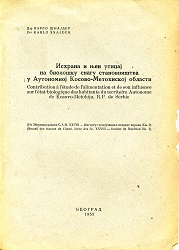
Keywords: Kosovo 1953;
Research was conducted by Dr. Karlo Šnajder in the early 1950s as a project of the Institute of Alimentation at the Serbian Academy of Sciences. It was published in 1953 by the Academy as Issue XXVIII in the Series of Works of the Serbian Academy.
More...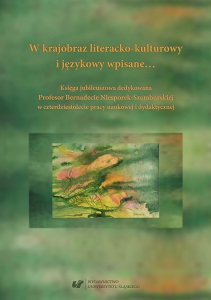
Keywords: Polish philological education; cultural and literary didactics; linguistic didactics; teacher education;academic education;
In the academic community, an anniversary publication is an academic volume which constitutes a special expression of appreciation to the researcher to whom it is dedicated. Forty years of academic work of Professor Bernardeta Niesporek-Szamburska became an inspiration for her friends, co-workers and students to prepare an anniversary publication The texts collected in this volume a varied both in terms of themes and with respect to genres – they include articles grounded in different areas of research (literary studies, linguistics, didactics of language teaching and literature teaching), essays, personal expressions directed towards the Jubilarian. The authors of the articles employ different methodologies and research tools, and the subjects of their interpretations are different texts (created by children, and also about children and for children).The articles were collected in three chapters: Literary and cultural landscape... (14 articles, including ones on linguistic poetry, phraseology and paremiology in Wanda Chotomska’s poetry, stereotypes of ethnic otherness in interwar literature for children and young adults, poems for children by Joanna Mueller, the motif of the donkey in The Four Musicians of Bremen and other cultural texts, the activity of a student motivated by required reading, the image of a mother in the story Po kamienistej drodze by Gustaw Morcinek), Linguistic Landscape... (16 articles, including ones on the linguistic culture of Polish people, the means of popularizing linguistic correctness among the young users of language, functional shaping of language, developing the skills of speaking, stimulating linguistic creativity of children, orthography, research on the linguistic image of the world of children and young adults), Landscape different to all others...(7 articles devoted to, among others, academic education and the development of didactic competencies of teachers, models of perceiving disability by authors of Polish Language textbooks, digital technology in modern schools) in order to, on the one hand, demonstrate the richness and variety of research connected with Polish language and teacher education and, on the other, to indicate the broad field of interests of Professor Bernardeta Niesporek-Szamburska, her academic quests, landscapes passed along her research journeys.The book is addressed to Polish language scholars, students of Polish philology, teachers of Polish language and literature and pedagogues.
More...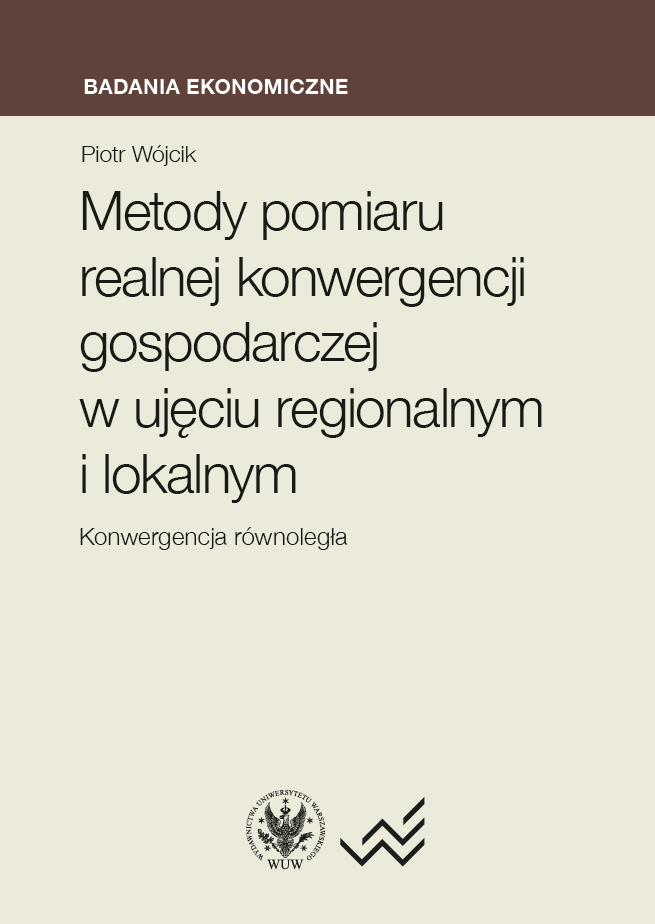
Keywords: regional convergence; parallel convergence; methods; distribution analysis
The author presents an innovative understanding of parallel economic convergence and proposes alternative methods of its measurement. The authors discusses examples of empirical studies that make use of the concept of parallel convergence in different contexts.
More...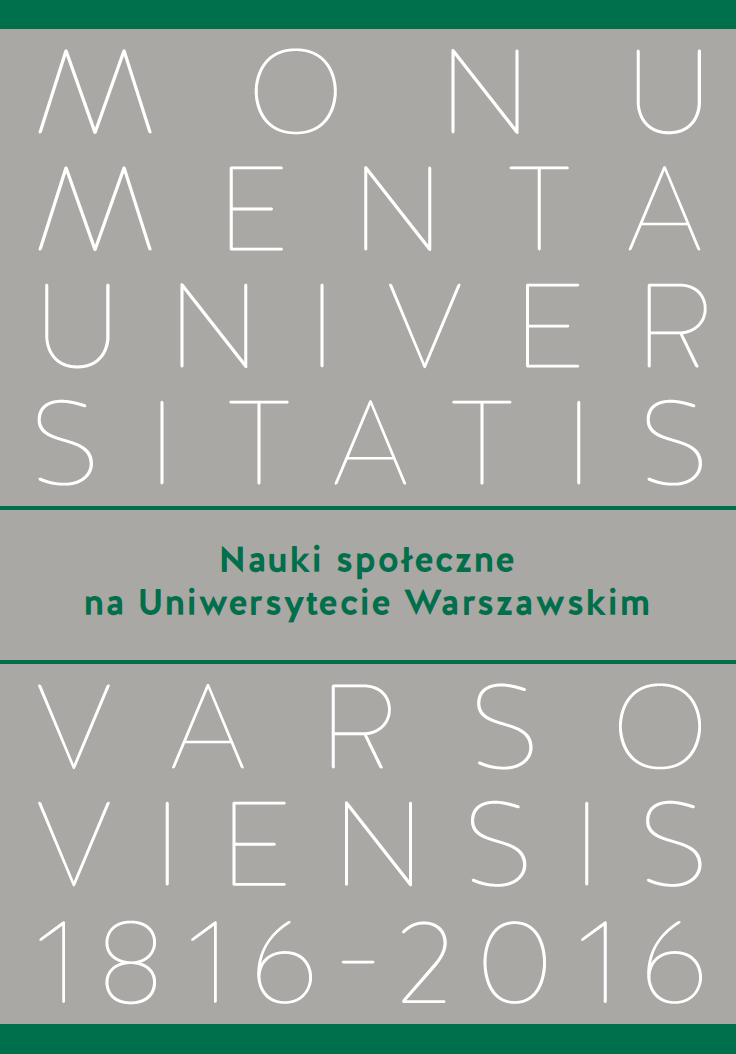
Keywords: social sciences; University of Warsaw; economics; political sciences; psychology; sociology; law
History of the social sciences at the University of Warsaw presented in the volume includes five main fields: economics, political sciences, psychology, sociology and law. The authors of the texts - specializing in the history of their disciplines - write about the process of their development on the academic level and about the changes they have been subjected within the University. The most important research currents, as well as the most distinguished representatives of the disciplines and their achievements are also reported.
More...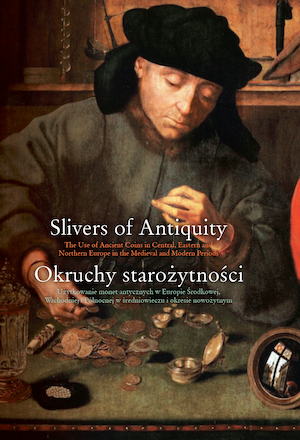
Keywords: catalogue; Greek; Celtic and Roman coins
The Catalogue is intended to cover all ancient coins finds (i.e. pre-AD 6th century Greek, Celtic and Roman coins) recorded by December 2017 from medieval or modern period context (dated approximately from the 7th century AD until the turn of the 18th century) from Poland. The finds are listed in the alphabetical order entered under the name reported as their find-spot – village, town, city, or a geographical feature (peat bog). The letter “U” preceding a find number indicates very spurious finds and ones that are very unlikely to originate from a medieval or a modern context although in some cases reported as such, and consequently not included in the descriptions, maps and analyses presented in the preceding chapters of this monograph. Thay have been listed in the end of the Catalogue as the List of uncertain finds. And unless otherwise indicated, they have not been included in any of the maps of the finds.
More...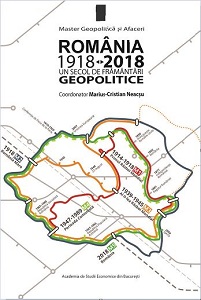
Keywords: Romania; Romanian Centenary (1918-2018); geopolitics of Romania; the Romanian school of geopolitics; Geopolitics and Business MA; geography; Bucharest University of Economic Studies
The volume entitled Romania 1918-2018. One century of geopolitical concerns (coordinated by Associated Professor Marius-Cristian Neacșu, PhD) is the fruit of the efforts and scientific research of the Geopolitics and Business Master Program, within the Bucharest University of Economic Studies, with the participation of both consecrated (professors) and early staged researchers (final year MA students), in a perfect symbiosis, on one hand by virtue of a noble ideal - the appearance in and under the auspices of ASE Bucharest in this important anniversary year, the Centenary of the Great Union (1918-2018) – and, on the other hand, as a proof of the Romanian higher education quality, through relevance, rigor and scientific accuracy of the information. Thus, the paper presents a particular interest, with regards to the subjects as well as its contribution to the understanding of the context and the geopolitical and geoeconomic Romanian framework, its dynamics over the last 100 years, with current implications on the regional and national business environment.The thematic area underlying this volume of studies and researches is Geohistory, Geopolitics and Geoeconomics, being structured in 15 studies, within three parts: Part I. The Centenary of Romania (1. The complicated geopolitical position of Romania, Marius-Cristian NEACȘU); Part II. One century of geopolitical concerns (2. Romania in World War I, Marian TUCĂ; 3. Nicolae Iorga and the Great Union. Geopolitical and geohistorical contributions, Clara NAE; 4. Romania between 1918 and 1944, Beatrice AVRAM; 5. The population of Romania in the interwar period, Bogdan ȚEBREAN; 6. The economy of Romania in the interwar period, Cătălin CONSTANTINESCU; 7. Romania during the communist regime, Roxana MATEI; 8. Romania after 1989, Laura-Iulia CIUPERCĂ; 9. Romania's relations with its neighbouring countries 1918-2018, Alina GHERGHINA, 10. Romanian-Russian relations 1918-2018, Marian TUCĂ); Part III. Geography and Geopolitics. The Romanian School (11. Simion Mehedinți, precursor of the Romanian school of geopolitics, Marius-Cristian NEACȘU; 12. Romania in the Romanian geopolitical studies in the first half of the 20th century, Silviu NEGUȚ, Marius-Cristian NEACȘU; 13. The contribution of Romanian geographers to the construction of modern Romania. Paris Peace Conference, 1919-1920, Marius-Cristian NEACȘU, Gheorghe VLĂSCEANU; 14. Simion Mehedinți, the great absent of Paris Peace Conference, 1919-1920, Marius-Cristian NEACȘU; 15. A long century of geography at Bucharest University of Economic Studies. The Master Program of Geopolitics and Business, Marius-Cristian NEACȘU).
More...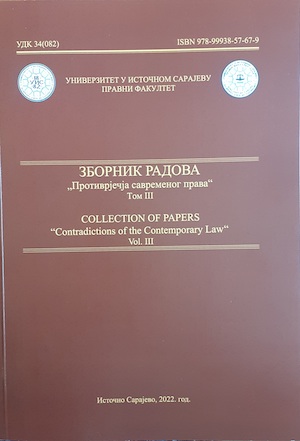
Keywords: Sassari; Civitas; Commune; City; Giudicati legal order;
Communal life in Sardinia is not part of local tradition - it was transplanted from abroad. In order to be able to understand concept and essence of transplantation of communal institutions in Sardinia we need to analyze from a scientific perspective legal status of Sardinia's local communities (among which Sassari) which developed before the Communes. These were "Bidas" from the period of Giudicati. The aim of the paper is to compare typically Sardinian status and Communes which were transplanted from northern Italy by identifying similarities and differences between them. One similarity concerns the pattern used - both Bidas and Communes can be related in its form to ancient Mediterranean city - Geek polis and Roman urbs civitas. This institution reached its full maturity in republican - imperial municipium. Major difference between Bidas and Communes concerns their relationship with feudal institution - in Sardinian's Bidas that relationship was non-existent, whereas in Italian and European Communes feudal institutions had dominant position. Particularly important example of Sardinian Communal experience is Free Commune of Sassari whose history (albeit short, somewhat less than half a century from 1272 to 1323) falls into late phase of otherwise long (five centuries) Giudicati period.
More...